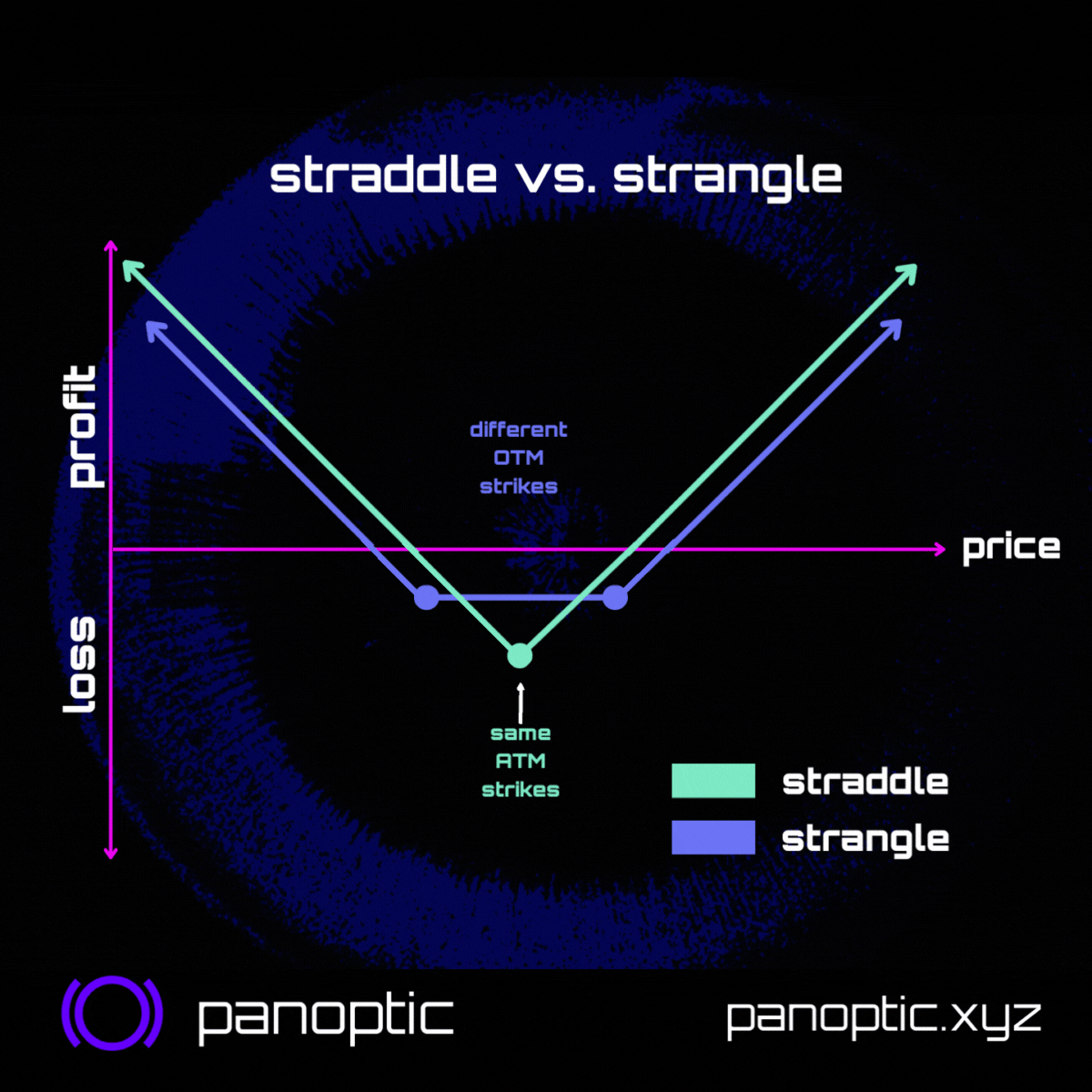Volatility Bets - Straddles vs. Strangles
Understanding Straddles and Strangles in DeFi Options Trading, including delta, vol, POP, and profit potential...
Straddles🤸🏽♂️ & strangles 🙅♀️😵 are options strategies that let you bet on volatility. What's the difference? How to choose the right width? 💊 Keep reading to take the red pill and see delta, vol, & strangles in an entirely new way...
The names "straddle" & "strangle" conjure up images of fitness🤸🏽♂️ and murder🙅♀️😵. However, in the world of options, straddles & strangles can be both liberating and legal. We’ll explain:
What they are
When to use one over the other
How to choose the right strikes
🤸🏽♂️ Straddles are at-the-money (ATM) bets on volatility. Buying a straddle means you are betting on the price moving more than expected by the market, either UP or DOWN. Need a refresher? Check out our latest #ResearchBites thread on straddles!
🙅♀️😵 Strangles are also volatility bets and benefit from price volatility (for buyers) or price stability (for sellers) just as straddles do. However, unlike straddles, strangles can be customized to your taste 😋
Straddle: same strikes
Strangle: different strikes
Another difference is the premia:
Straddle: expensive💰
Strangle: cheap🫰
That's b/c the straddle's legs are ATM, meaning they're *less* likely to expire worthless. The strangle's legs are out-of-the-money (OTM), meaning they're *more* likely to expire worthless.
Because strangles are wider they're easier to manage.
(Seller's POV)
Straddle: higher vega, lower probability of profit (POP), risk of becoming inverted 😳👇, need to monitor/manage frequently
Strangle: lower vega, higher POP, more forgiving, less frequent management
(Buyer's POV) The underlying price only has to move a little for the straddle to become in-the-money (ITM). Whereas the price has to move A LOT before the strangle becomes ITM. You can actually quantify the likelihood of each strategy becoming ITM with delta! 👇
Delta measures how much $ the option value changes in response to a $1 change in the underlying asset price.
Delta = 0.5 example: A $1 increase in $ETH results in a $0.50 increase in an ETH option's value. But delta can also be interpreted as probability! 💊
Delta ALSO proxies the expected probability that an option will end ITM at expiration.
Delta = 0.5: Option has ~50% chance of ending ITM.
Delta = 0.7: Option has ~70% chance of ending ITM.
Delta = 0.2: Option has ~20% chance of ending ITM. 💊🤯
Let's review straddles vs. strangles now that we know the secret behind delta:
Straddle: legs are ATM ➡️ delta = 0.5
Strangle: legs are OTM, less likely to be exercised, delta is smaller ➡️ delta < 0.5
(Combined legs are still delta neutral ➡️ put + call delta = 0)
Straddles have a 100% chance of ending ITM.
Put leg: delta = -0.5 ➡️ 50% chance
Call leg: delta = 0.5 ➡️ 50% chance 50% + 50% = 100% chance that a leg ends ITM
Strangles have a <100% chance of ending ITM. Ex:
Put leg: delta = -0.2 ➡️ 20% chance
Call leg: delta = 0.2 ➡️ 20% chance 20% + 20% = 40% chance that a leg ends ITM
(Seller's POV) We also have to factor in the upfront premia earned from selling straddles/strangles. There might be a 60% chance of the strangle expiring worthless (40% chance of becoming ITM). But the probability of profit (POP) is >60% due to premia earned by the seller.
In fact, strangles have higher POP than straddles. But there's a tradeoff:
Straddle: Lower POP, higher profit potential
Strangle: Higher POP, lower profit potential ➡️ Less risk, less expected return!
Straddles:
Same (ATM) strikes
Expensive
More monitoring
Low probability of profit (POP)
High profit potential
Strangles:
Different (OTM) strikes
Cheap
Less monitoring
High probability of profit (POP)
Low profit potential
📢 None of this is financial advice.
Warning: for sellers, both straddles and strangles have potentially unlimited loss (and are equally susceptible to black swan events)





